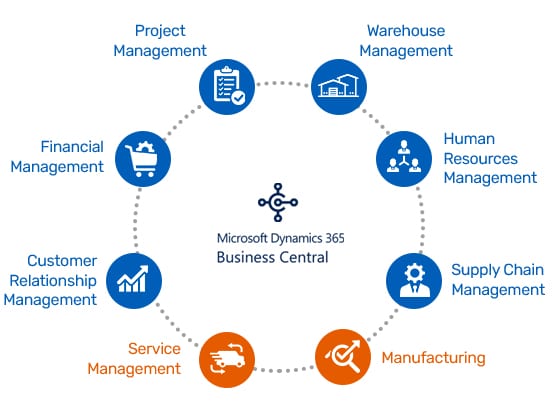Microsoft Dynamics 365 Business Central
Microsoft Dynamics 365 Business Central (D365BC) is the latest version of Microsoft Dynamics NAV. Microsoft’s D365BC is an all-in-one business management solution that gives you an end-to-end view of your business. Features include accounting, operations, sales, supply chain, customer service, and project management tools.
D365BC allows different parts of your business to work together easily and more efficiently with automated tasks and workflows, utilizing many of Microsoft’s well-known and used tools such as Outlook, Word, and Excel integrated within.

Microsoft Dynamics 365 Business Central Can Help Your Company:
Manage Financials
D365BC facilitates managing your financials by connecting data across all areas of your business from accounting, to sales, to customer interactions. It streamlines accounting and financial tasks enabling automatic account reconciliation and quick, accurate report generation.
Automate Supply Chain
Using built-in intelligence and Power BI dashboards, D365BC can maximize efficiency of your supply chain. D365BC can predict when and what to replenish helping to optimize inventory levels. It automatically calculates stock levels, lead times, and reorder points to help you avoid lost sales, and any over or under inventory issues.
Improve Customer Service
D365BC provides the ability to track all customer interactions and gives guidance on upsell, cross-sell, and renewal opportunities throughout your sales cycle. You will be able to respond to sales and service requests quickly from within Outlook.
Improve Project Management
Managing projects is easy with D365BC. The solution has the capabilities to help you create, manage, and track customer projects using timesheets along with advanced job costing and reporting capabilities. You can also develop, modify, control budgets, track invoicing, and manage resources with D365BC’s real-time insight functionality.
Optimize Operations
D365BC provides several tools to help manage operations from forecasting, to automatic purchase order creation, to the ability to calculate and optimize manufacturing capacity, and resources to improve production schedules.
